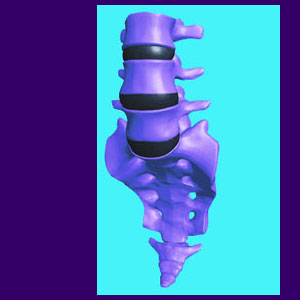
Finding lasting coccyx pain relief can be a real challenge for any patient who suffers from chronic symptoms in the tailbone. The coccyx has proven itself to be one of the most annoying parts of our anatomy, since it serves absolutely no purpose, but is often affected by injury and lasting pain syndromes. Ironically, once removed, many patients continue to suffer back ache in the surrounding areas, proving that the structure itself is not the source in some cases, but merely the area currently affected by a larger scale symptomatic complaint.
Remember that if you do seek treatment for tailbone ache, you must fully understand the nature of the chosen therapy. Be sure to ask if the treatment can actually cure you or if it is merely designed to help you cope with the pain.
Finding Coccyx Pain Relief
Most patients with chronic coccyx pain endure a variety of symptomatic treatments usually including back pain management drugs, epidural injections, chiropractic adjustments and physical therapy. Rarely do these therapies resolve severe coccyx pain. In many cases, the local pain is also accompanied by sciatica symptoms radiating into the buttocks or legs, further hindering an accurate diagnosis.
For patients with debilitating long-term issues, coccyx removal surgery is an option and may be effective in some cases. However, a great number of patients who enjoy alleviation of pain once the coccyx is removed may develop symptoms in a related or unrelated location, demonstrating possible evidence of a mindbody pain syndrome being the origin of the problem. Other patients continue to have the perception of coccyx pain even after the actual tailbone has been surgically removed. This concurrence is called phantom pain.
Relieving Coccyx Pain Conditions
Most coccyx pain is theorized to occur due to traumatic injury. Falls are the most common diagnostic theory, followed by sports accidents and other forms of trauma. Childbirth can cause coccyx injury, as well for some women.
A broken tailbone can certainly be painful, but is unlikely to enact chronic misery once healed. However, it is common for patients to have pain months, years or even decades after coccyx trauma, which is illogically blamed on the original injury. Remember that the body’s most basic imperative is to heal and heal it will.
It is highly unlikely that a trauma to the tailbone will actually create long lasting pain which endures even after the injury has healed. In these cases, the injury almost always acts as a back pain trigger and the enduring pain could either be ischemic or related to a yet undiscovered alternative anatomical problem.
Coccyx Pain Relief Tips
Tailbone pain is one of the most difficult to treat and also one of the most commonly associated with the mindbody process. A slip in the bathtub when you were 10 is unlikely to cause pain when you are 30. A fall down the steps 3 years ago is unlikely to still be the real source of symptoms today. A slip on the ice 22 years prior is not logically the causation of pain in the present… I think you get the point here.
Of course, there are exceptions, such as fractures which never did heal or did not heal correctly. However, these represent a minority of patients with coccyx pain. The rest may have lingering symptoms due to countless possible sources, including the high incidence of oxygen deprivation of the tissues in the area. These patients should be especially careful with invasive and surgical options, since the likelihood of a symptomatic recurrence in the same or a different area is statistically very likely.




